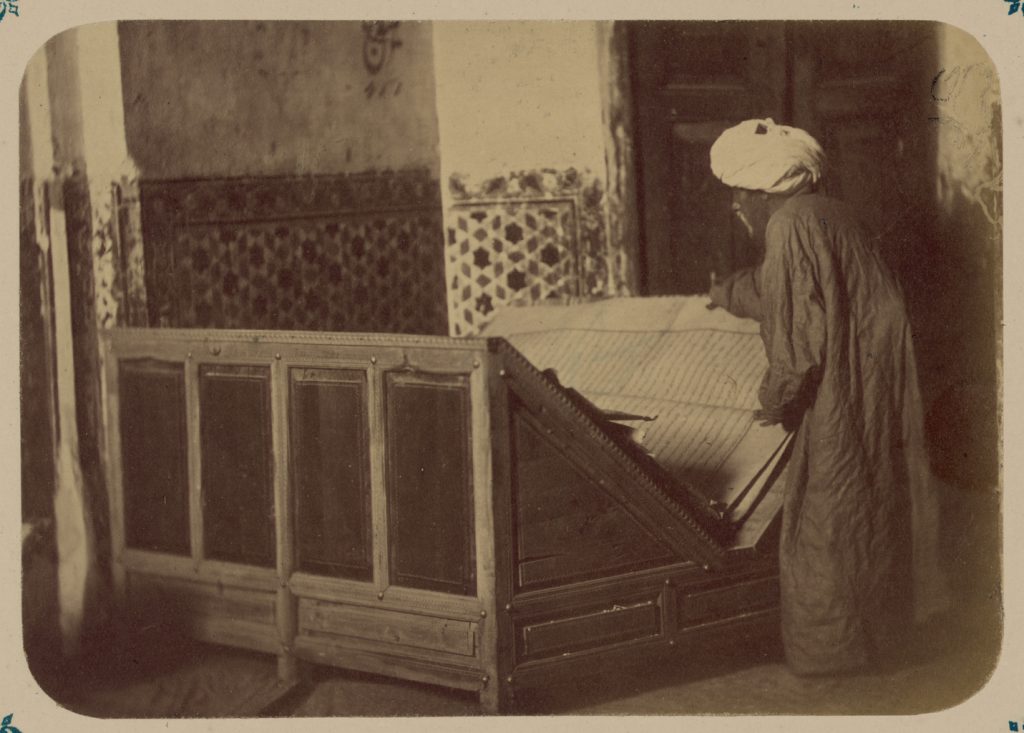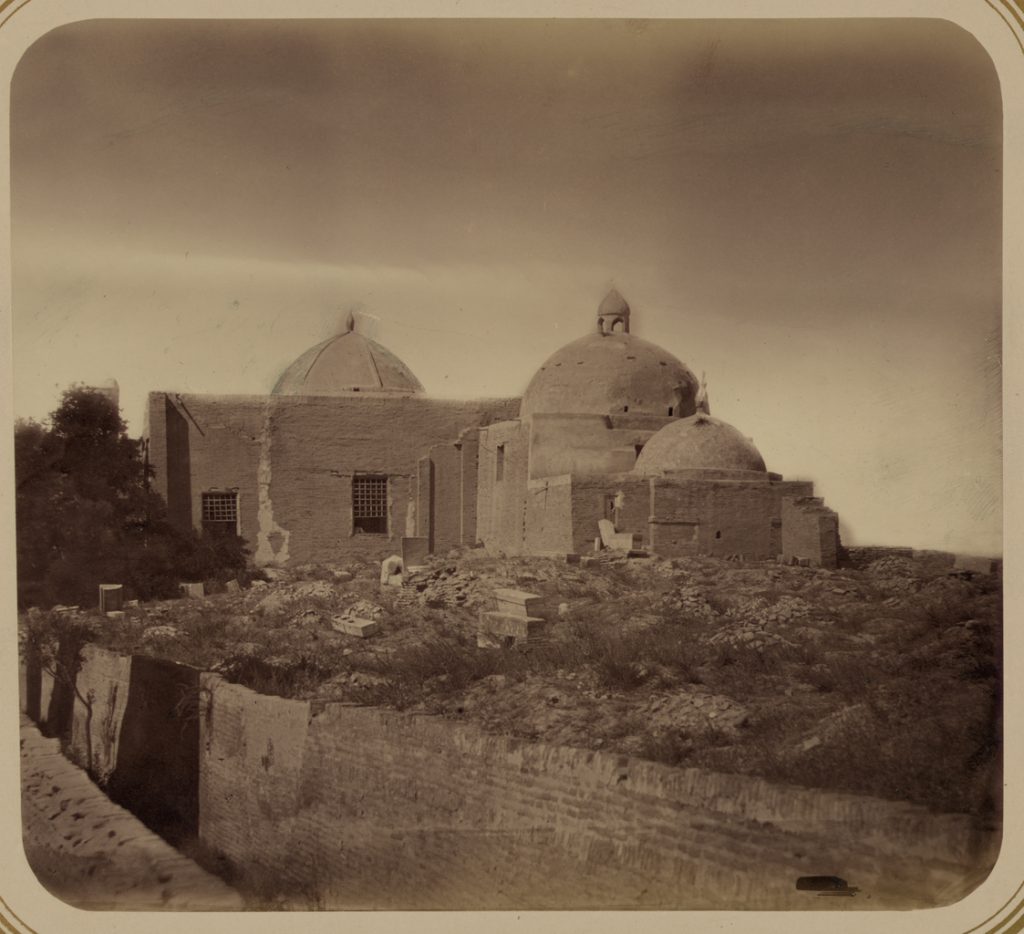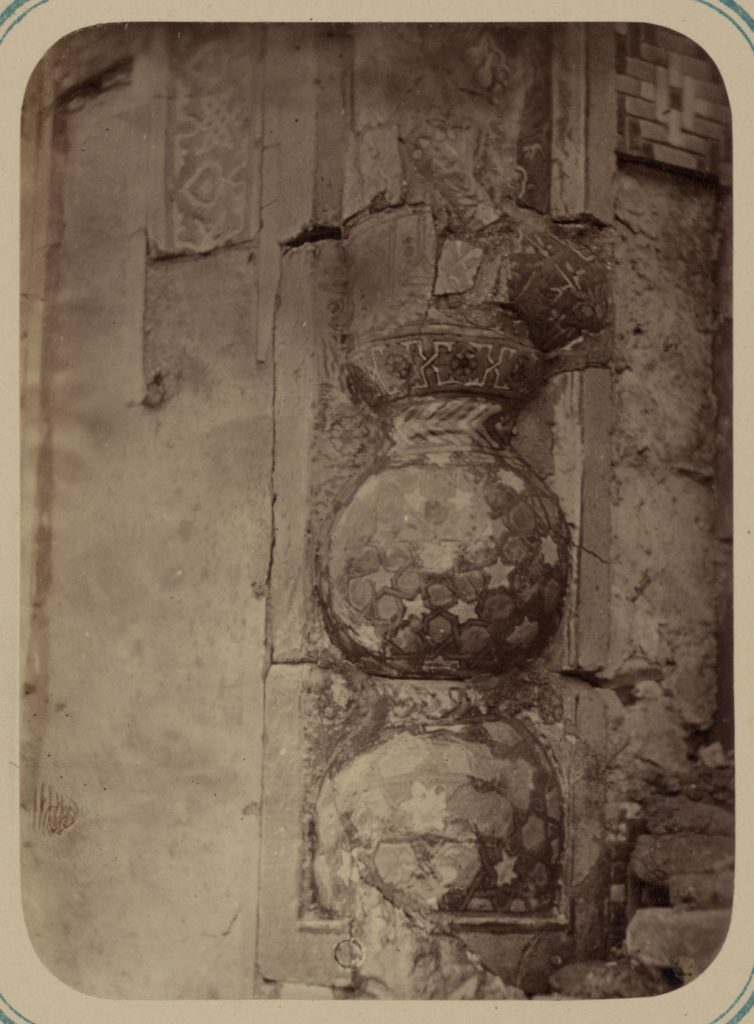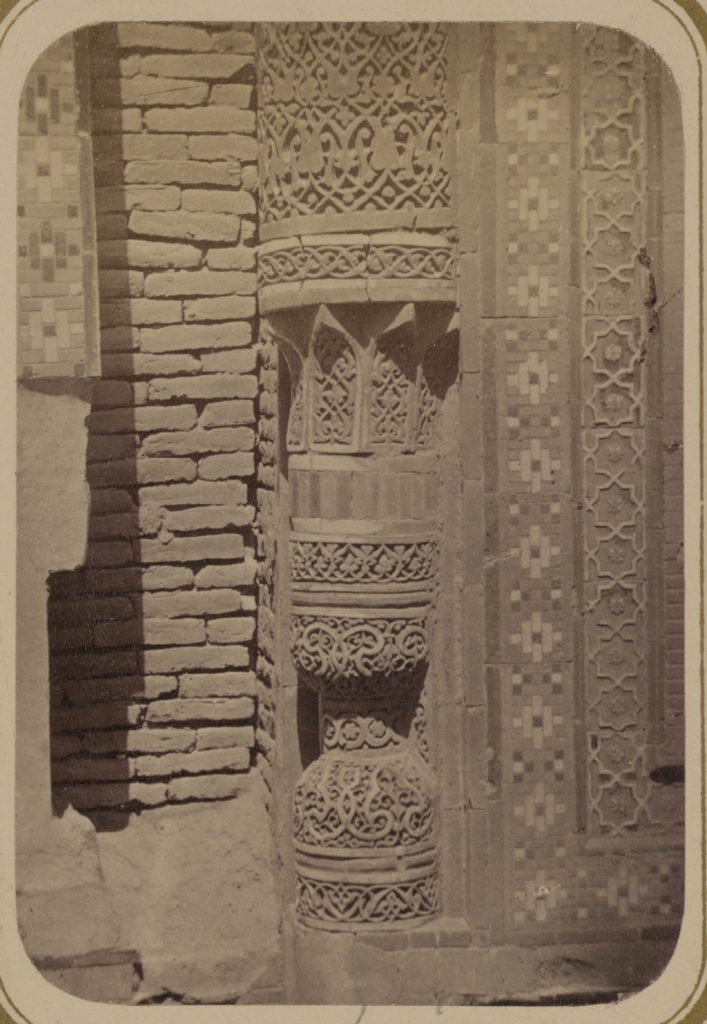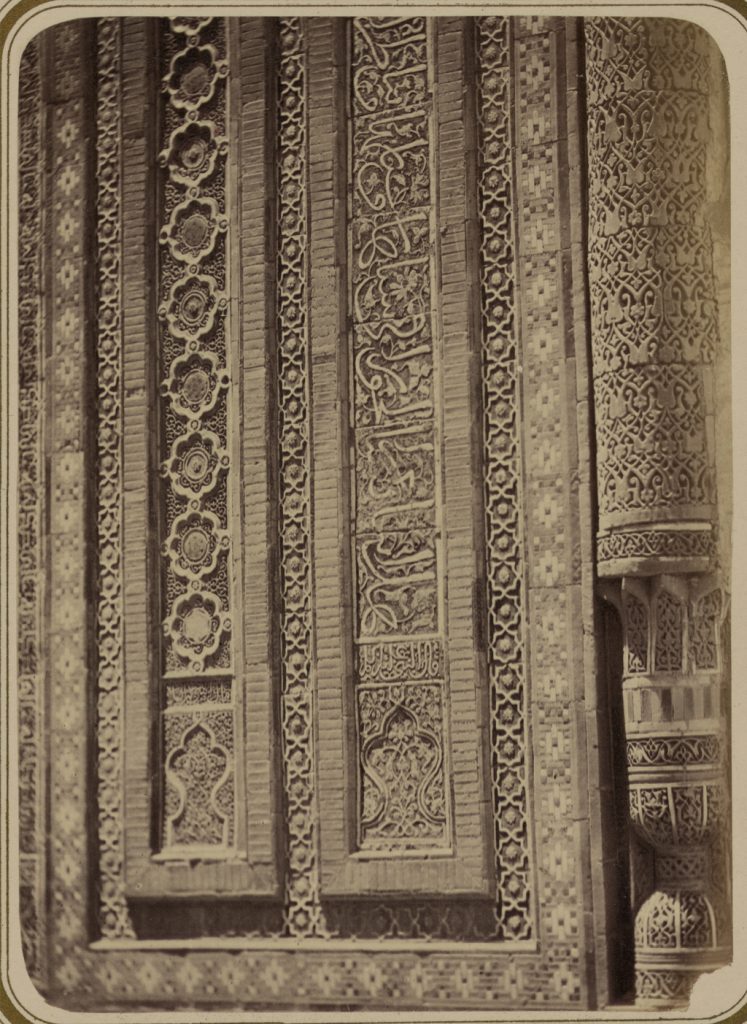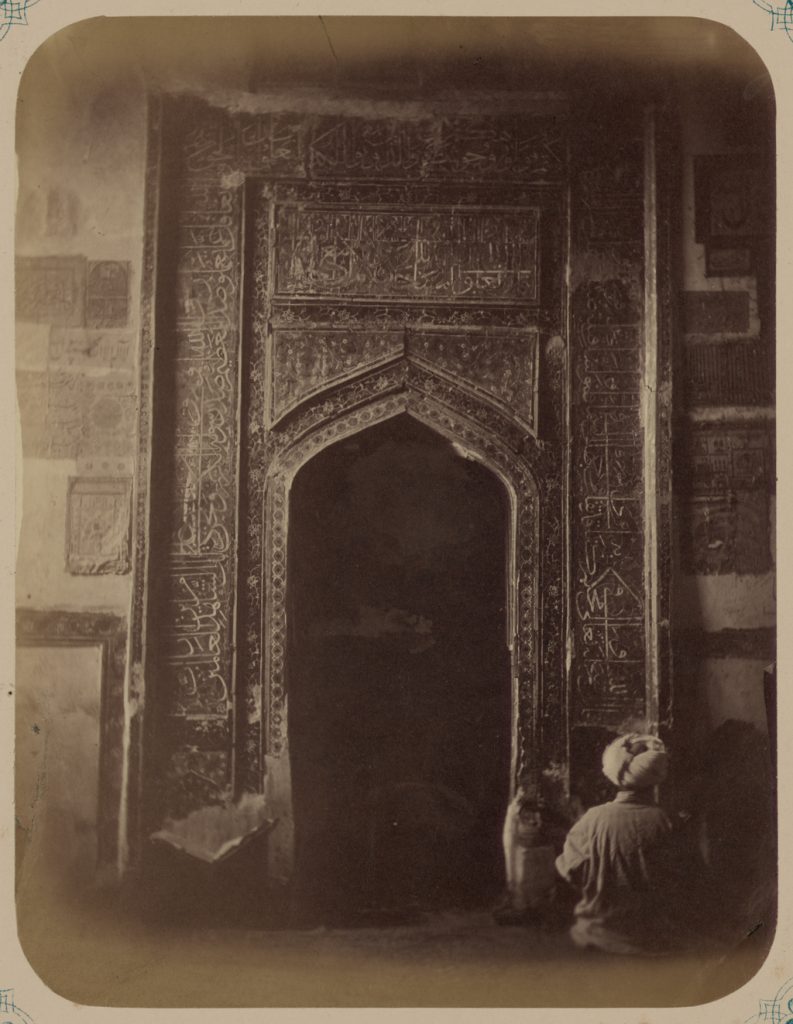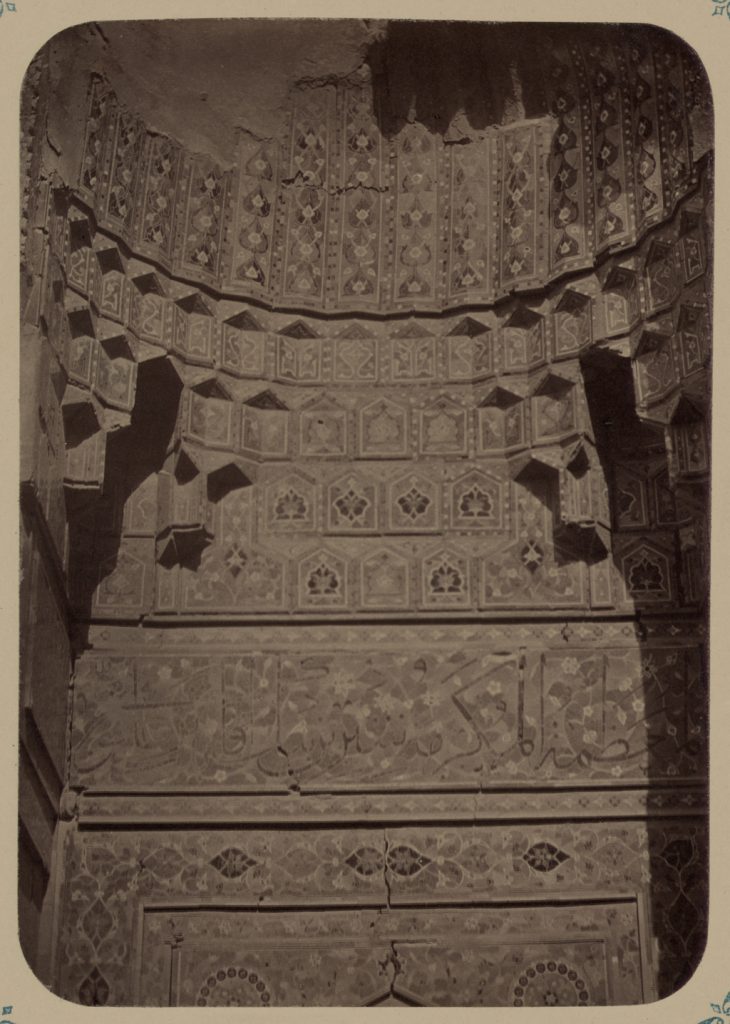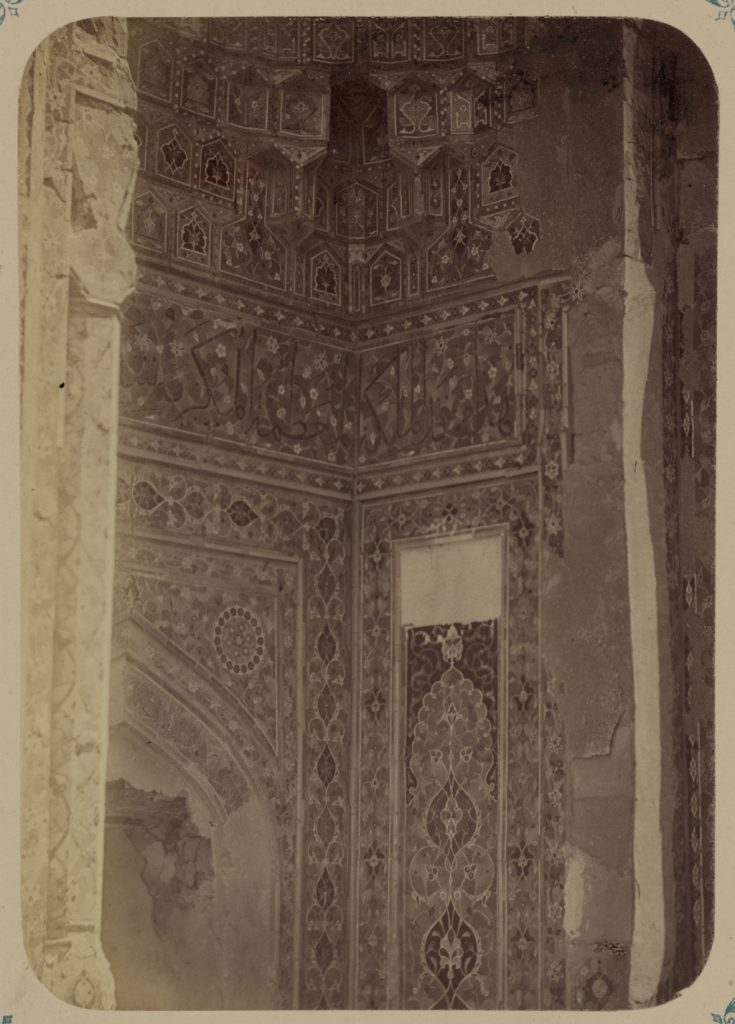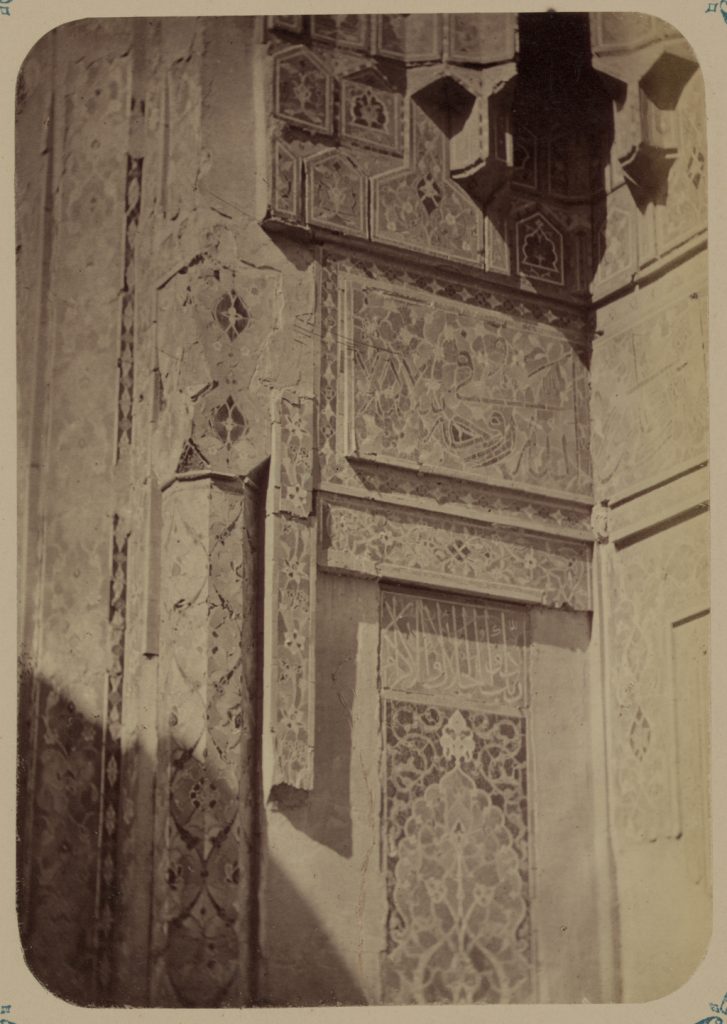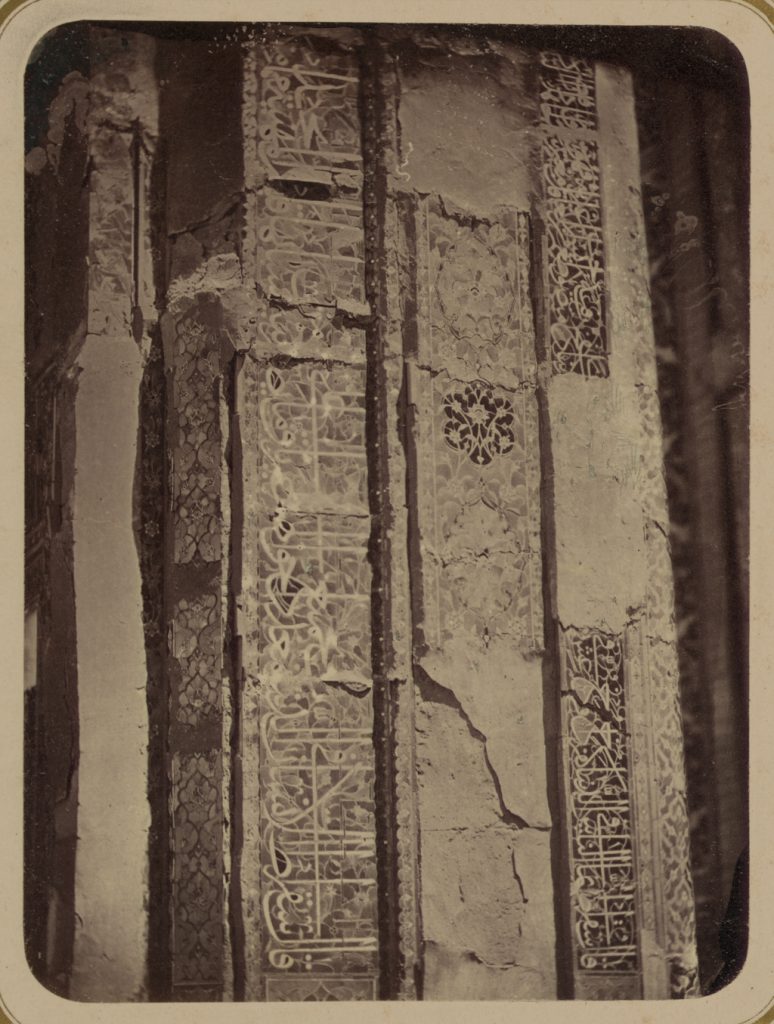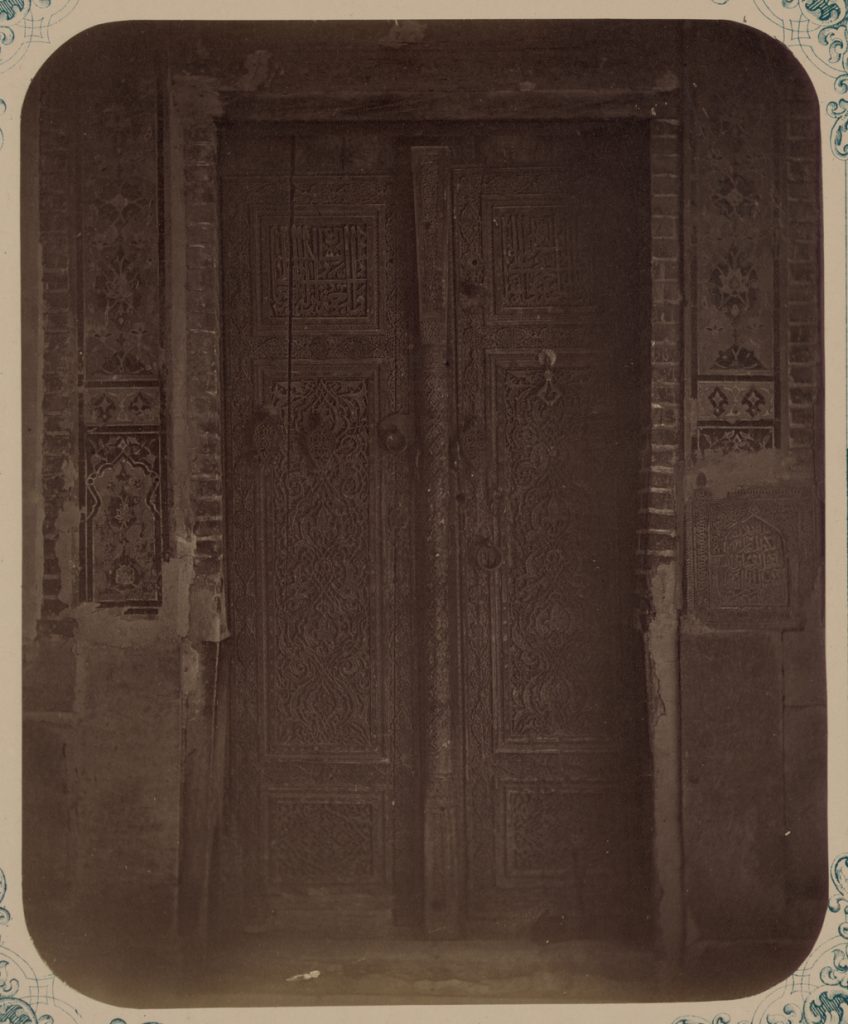This article is part of the Hidden Architecture Series “Tentative d’Épuisement”, where we explore the practice of an architectural criticism without rhetoric and based mainly on the physical experience of the work itself.
Este artículo forma parte de la serie “Tentativa de Agotamiento”, comisariada por Hidden Architecture, donde exploramos la práctica de una crítica arquitectónica ausente de retórica y fundamentada sobre todo en la experiencia física de la propia obra.
***
Further Information on:
Hidden Architecture: Shah-i-Zinda (II)
05:43
The smell of freshly extinguished campfire ash wafts through the crack in the door. Clinging to my still-dry palate, it evokes the aroma of smoky black tea.
Olor a ceniza de lumbre recién extinguida penetra por el resquicio de la puerta. Adherido a mi paladar todavía seco, evoca el aroma del té negro ahumado.
06:12
The first sounds of the cockerel, lord and master of a neighbouring pen, surprise me as I stand, my face almost pressed against the cold glass of the window. I’ve covered myself with my coat but I can’t get warm. The pain in my back, still stiff and numb from the short sleep, runs through my body to my icy feet, which gradually regain some feeling. A shyly violet shadow lightens the region of firmament outlined by the rooftops. Seconds later, the clouds turn orange and the shadows in the corners vanish into thin air.
Los primeros avisos del gallo, dueño y señor de un corral vecino, me sorprenden de pie, la cara casi pegada al frío cristal de la ventana. Me he cubierto con el abrigo pero no consigo entrar en calor. El dolor de espalda, aún rígida y entumecida por el sueño breve, recorre mi cuerpo hasta unos pies helados que recobran poco a poco algo de sensibilidad. Una sombra tímidamente violeta aclara la región de firmamento recortada por los tejados. Segundos después, las nubes se tiñen de naranja y las sombras que habitan en los rincones se esfuman en el aire.
06:21
The adhan sounds. Perched on the minaret of some mosque near this room, the muezzin calls the first prayer of the day. His amplified voice puts an end to the calm of a night that is now extinct, which, amid yawns, still languishes waiting for the first rays of sunlight. Flocks of pigeons take flight to the rhythm of the words recited in the Farsi language.
Suena la adhan. Encumbrado en el minarete de alguna mezquita próxima a este cuarto, el almuédano llama a la primera oración del día. Su voz amplificada pone fin a la calma de una noche ya extinta, que entre bostezos todavía languidece a la espera de los primeros rayos de sol. Bandadas de palomas emprenden el vuelo siguiendo el compás de las palabras recitadas en lengua farsi.
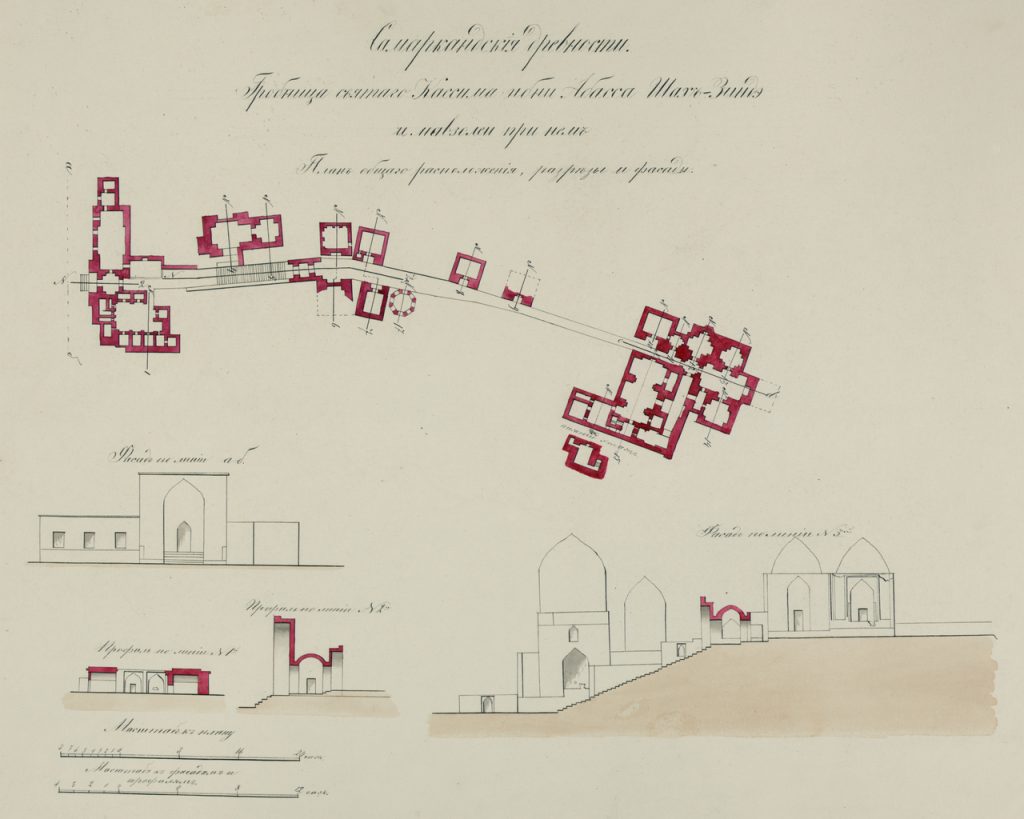
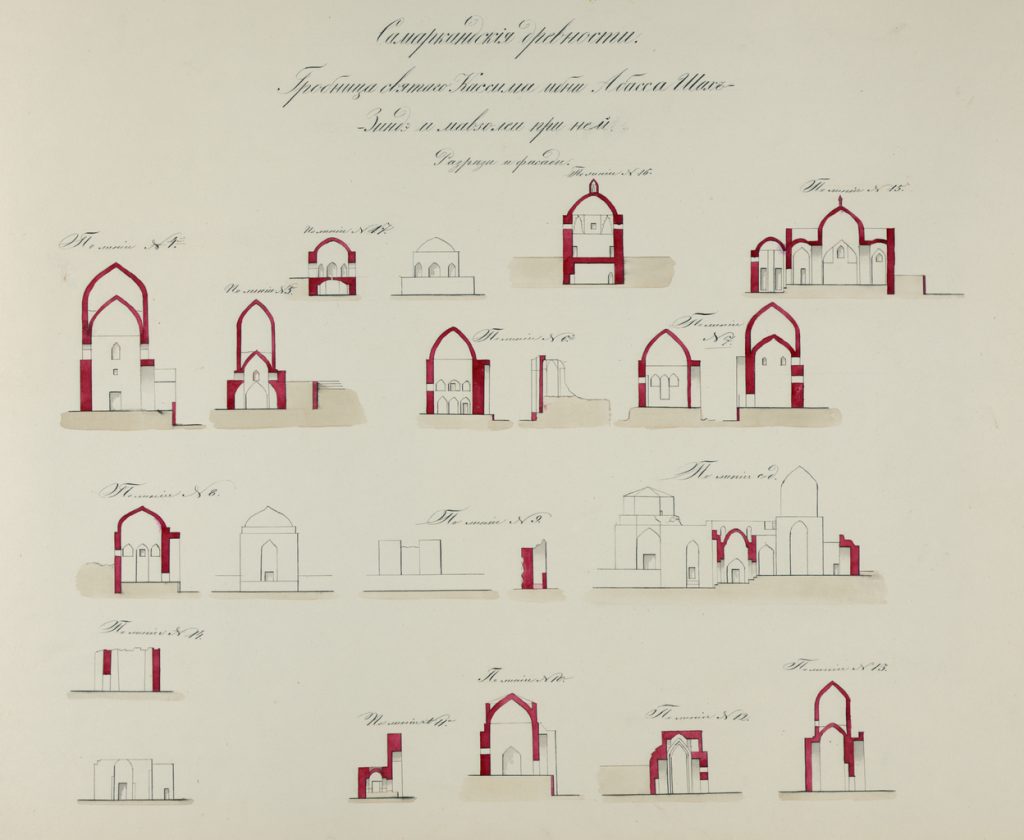
06:52
The sun shines brightly on the veranda outside. The wooden floor of this first floor creaks with a wailing sound under my footsteps. Most of the windows remain closed by the wooden shutters. On the lower level, a sturdy orange tree supports the weight of beautiful, shiny fruit with its supple branches, bent slightly towards the ground. Someone has just watered the tree and the water absorbed by the thirsty earth awakens a pleasant sensation of freshness.
En la galería exterior luce plenamente el sol. El suelo de madera de este primer piso emite crujidos de lamento bajo mis pisadas. La mayoría de ventanas permanecen cerradas por las hojas de madera de las contraventanas. En el nivel inferior, un robusto naranjo soporta el peso de unos frutos hermosos y brillantes con sus ramas flexibles, vencidas levemente hacia el suelo. Alguien acaba de regar el árbol y el agua absorbida por la tierra sedienta despierta una agradable sensación de frescura.
07:03
Poured and returned to its container up to three times, as defined by Uzbek tradition, the tea steams vigorously in this room with its carefully decorated walls and ceilings. Of noble proportions and great height, it once served as a synagogue for a wealthy Jewish family, according to its current owner and now our host. The windows are arranged on the long side and their frames almost reach the ceiling of the room. Through the fine net curtains, the capitals of organic morphology that finish off the supports of the exterior portico can be seen with precision. On the opposite side, veiled by a permanent half-light, glass cabinets filled with small objects whose significance is unknown to us, catch the glimpses from outside. On the table, covered with a delicate tablecloth, the breakfast of grapes, figs, plums, almonds, sultanas and honeyed pastries is consumed between words. In the solitude of this room, the last echoes of our tea bowls lodge in the wooden coffered ceiling.
Vertido y devuelto a su recipiente hasta en tres ocasiones, tal y como define la tradición uzbeka, el té humea vigorosamente en este salón de paredes y techos decorados con esmero. De proporciones nobles y gran altura, acogió en otro tiempo la función de sinagoga de una familia judía acomodada; relata su actual dueño y hoy nuestro anfitrión. Las ventanas se disponen en la cara más larga y su marco alcanza casi el techo de la sala. A través de los finos visillos, se pueden apreciar con precisión los capiteles de morfología orgánica que rematan los soportes del pórtico exterior. En la cara opuesta y veladas por una permanente penumbra, vitrinas abarrotadas de pequeños objetos cuyo significado desconocemos recogen los destellos de fuera. Sobre la mesa, cubierta con una delicada mantelería, se consume entre palabras el desayuno compuesto de uvas, higos, ciruelas, almendras, pasas y pastas de miel. Al amparo de la soledad en esta habitación, los últimos ecos de nuestros cuencos de té se hospedan en el artesonado de madera del techo.
07:49
The exterior walls of the houses are humble, though massive, and always only one storey high, with no openings other than the entrance, which is usually the threshold to lush gardens and orchards with plum and fig trees. The street is not asphalted and the water mains run in plain view, either along the central axis or along one of the two banks, thus consuming the possibility of laying a pavement. Dry dust permeates everything. With funambulant dexterity, the power lines fly from one side to the other, supported by poles that defy the laws of gravity with reckless provocation.
Los muros exteriores de las casas son de factura humilde, aunque masivos; siempre de una sola altura y sin más aperturas que el acceso, umbral de entrada por lo general a exuberantes jardines y huertos con ciruelos e higueras. La calle no está asfaltada y la canalización de agua discurre a la vista, bien a lo largo del eje central o a una de las dos orillas, consumiendo así la posibilidad de trazar una acera. El polvo seco lo impregna todo. Con destreza funambulesca, el tendido eléctrico vuela de un lado a otro apoyado en postes que desafían a las leyes de la gravedad con temeraria provocación.
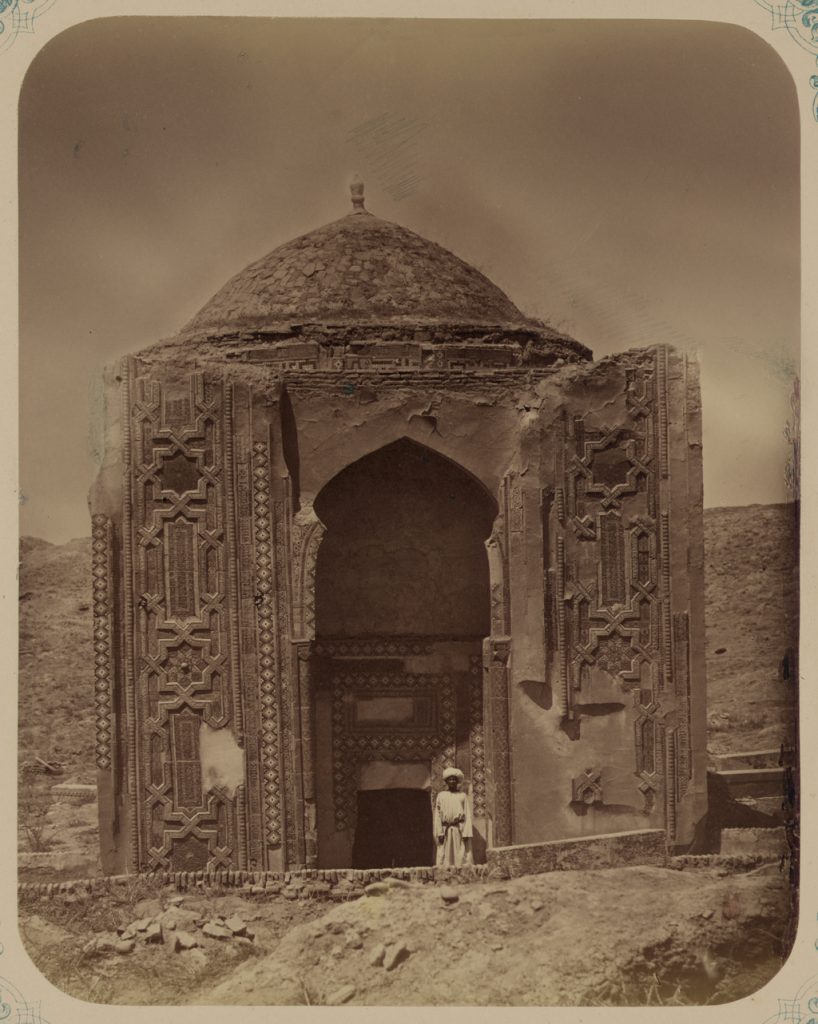
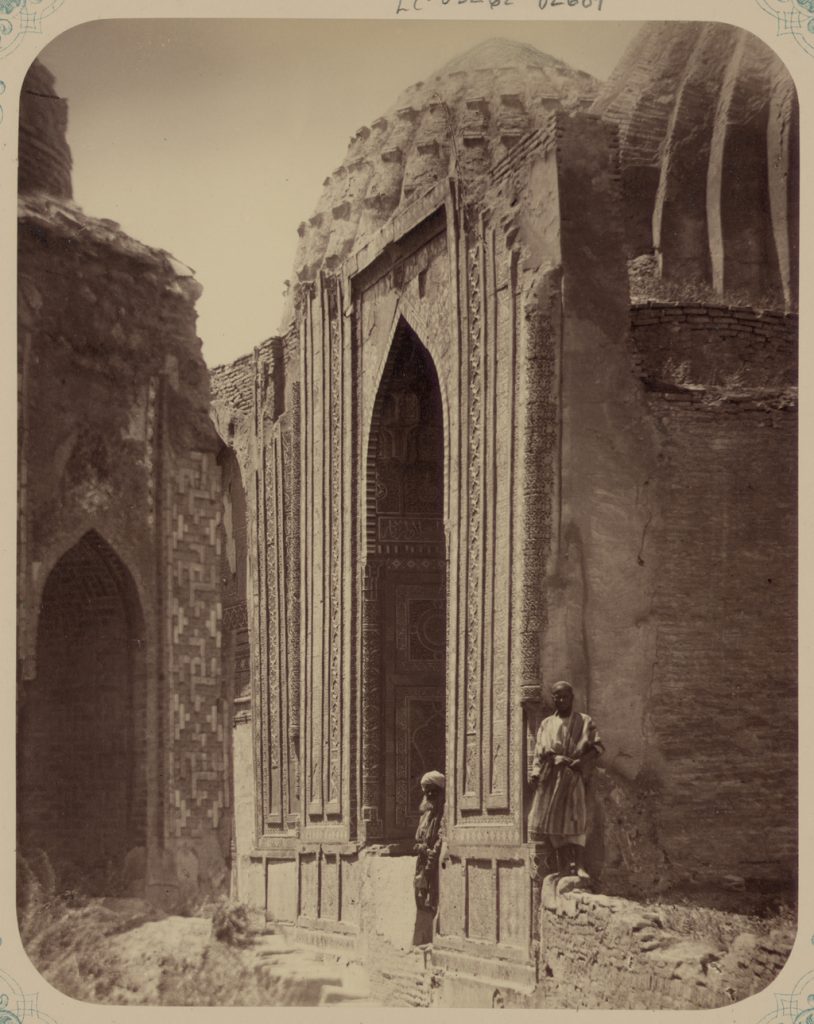
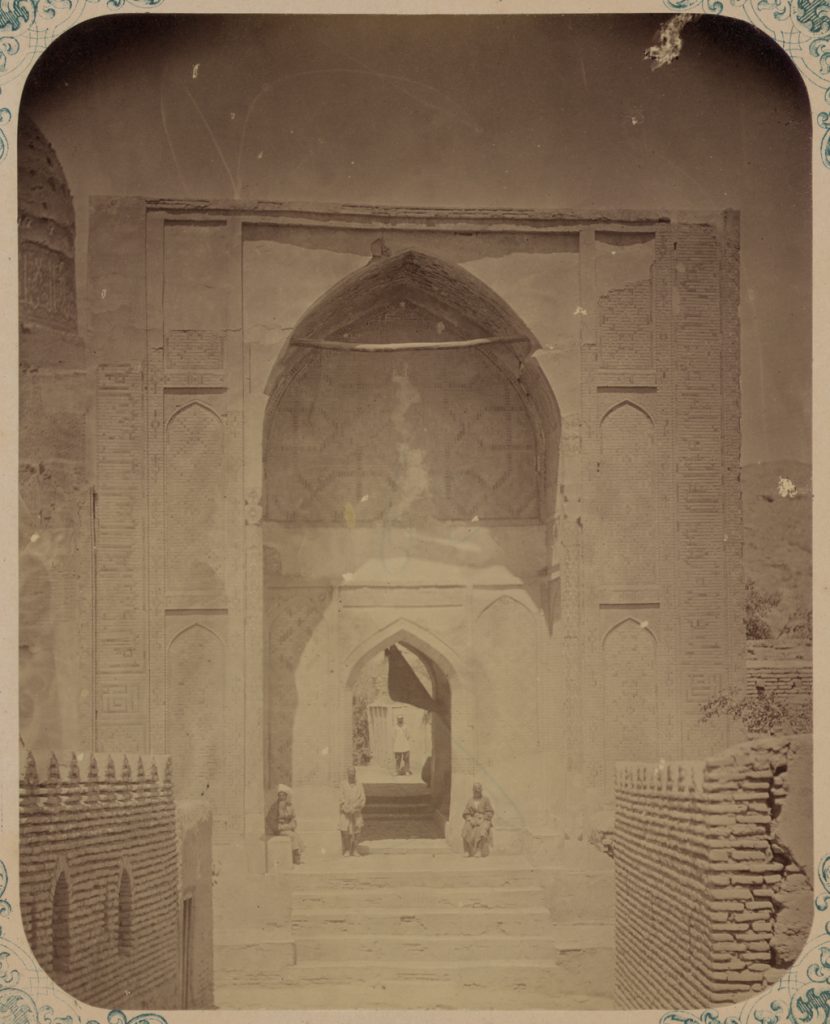

08:38
A small abandoned mosque, most of which fell into disuse during Soviet rule, stands with dignity a gracious entrance portico raised by thick, weathered wooden feet. Next to it, children play around a small fountain in the centre of a little-used square. Opposite this urban scene, probably so commonplace every morning, the courtyard of a house opens up to the outside as an antiques market. Rust and rust define the dominant pattern, although among military medals and old-fashioned cutlery, wooden and metal objects intended to support domestic chores from other eras are displayed with genuine elegance. In the centre, in front of the entrance gate, a huge bust of Lenin watches over the shouting children, their eyes fixed on the almost defeated roof of the mosque.
Una pequeña mezquita abandonada, la mayoría quedaron en desuso durante el dominio soviético, luce con dignidad un amable pórtico de acceso erguido por gruesos y vetustos pies de madera. Junto a ella, unos niños juegan alrededor de una pequeña fuente en el centro de una plaza poco transitada. Frente a esta escena urbana, seguramente tan cotidiana cada día por la mañana, el patio de una vivienda se abre al exterior como mercadillo de antigüedades. La herrumbre y la roña definen el patrón dominante, aunque entre medallas militares y cubertería demasiado anticuada lucen, con genuina elegancia, objetos de madera y metal destinados a servir de apoyo en quehaceres domésticos de otras épocas. En el centro y frente a la cancela de entrada, un enorme busto de Lenin vigila el griterío de niños con la mirada fija en el tejado casi vencido de la mezquita.
09:27
The tangled network of dusty streets ends here. Behind the metal railing, below our feet, the cut of an avenue, which in terms of traffic and size looks almost like a motorway, reveals the wounds of savage Soviet urban planning, which in the case of Samarkand showed perhaps its most aggressive face towards the pre-existing reality it encountered in its path. On the other side of this incessant parade of junkyard beasts, the Shah-i-Zinda mausoleum rises in its layout on a hill flanked by cemeteries: on its western side, the Muslim cemetery; to the east, the Jewish cemetery. With no traffic lights or zebra crossings to allow us to cross safely, we set off as soon as we notice the slightest interlude in the current.
La red enmarañada de calles polvorientas desemboca aquí. Tras la barandilla de metal, bajo nuestros pies, el corte de una avenida, por tráfico y dimensión parece casi una autopista, evidencia las heridas del urbanismo salvaje soviético, que en el caso de Samarcanda mostró quizá su cara más agresiva con la realidad preexistente que encontró a su paso. Al otro lado de este desfile incesante de bestias de chatarra, el mausoleo de Shah-i-Zinda asciende en su trazado sobre una colina flanqueada por cementerios: a su lado occidental, el cementerio musulmán; a oriente, el judío. Sin semáforos o pasos de cebra que permitan cruzar con cierta seguridad, emprendemos la carrera en cuanto se advierte un mínimo interludio en la corriente.

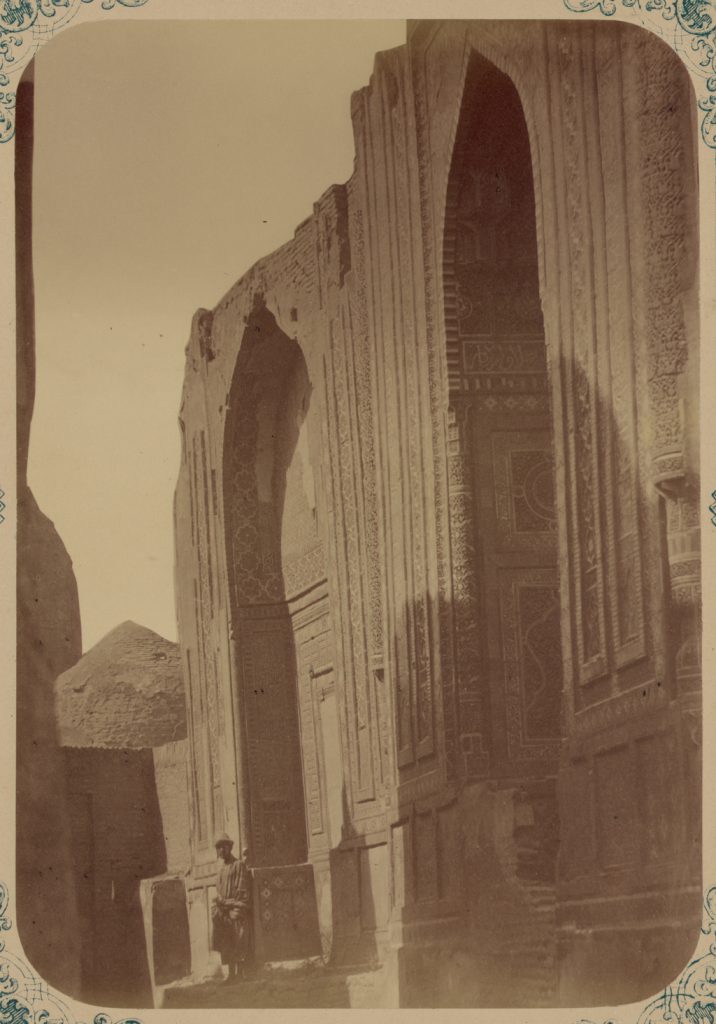

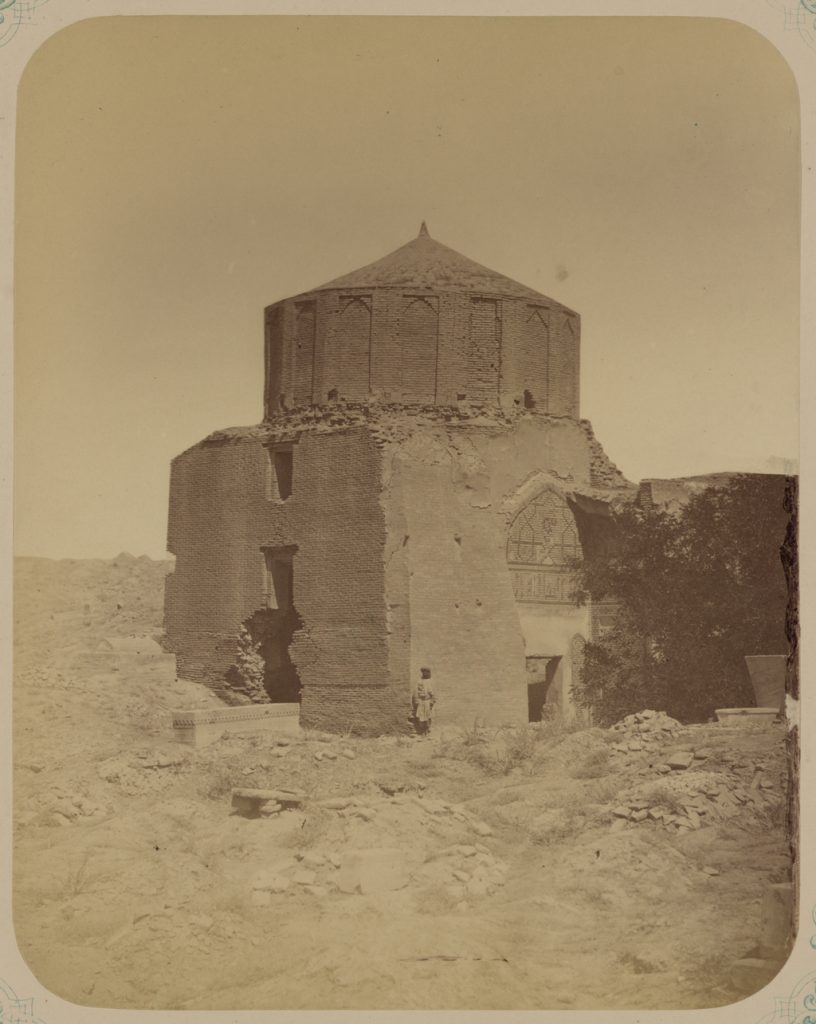
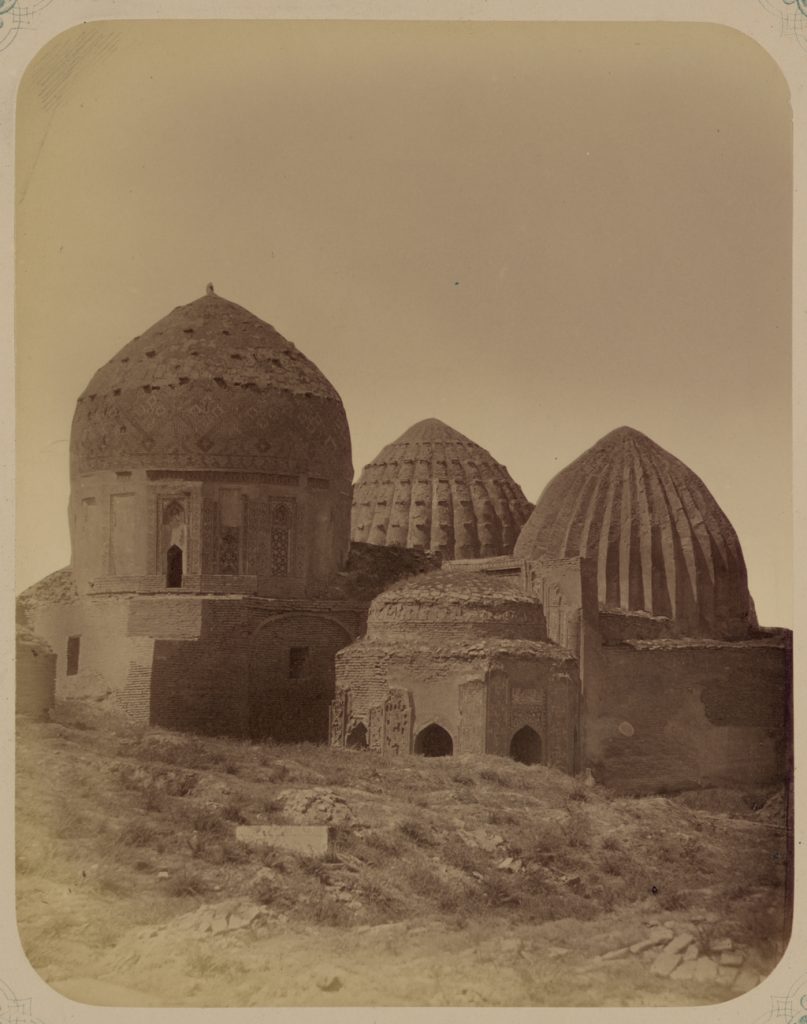
09:52
From below, the exterior of Shah-i-Zinda looks more like a fortress than a place of worship. The perimeter walls that form the entrance are sturdy, neutral, unplastered brick walls. The entrance arch, with its pointed top, shines in the neatness of its whiteness. The stairs leading up, also made of bricks laid in a sardinel pattern, are steep and, despite the short ascent, manage to slightly fatigue the visitor. A couple of policemen climb them briskly to lose themselves in the first shadows of the interior. Behind them are a group of older women who stop at almost every step, in an attempt to savour the rite of ascent, commenting on the impressions gathered on this visit, a pilgrimage perhaps. They wear flowery, loose-fitting dresses that extend down to their feet; their heads are covered with a white scarf that delicately fits their bust. Their smiles are wide, their foreheads are sunburnt, and there are golden glints of metal teeth in their mouths.
Desde abajo, el aspecto exterior de Shah-i-Zinda se asemeja más a una fortaleza que a un lugar de culto. Los muros perimetrales que conforman el acceso son lienzos robustos y neutros de ladrillo sin enlucir. El arco de entrada, con remate ojival, brilla en la pulcritud de su blancura. Las escaleras de subida, también de ladrillos colocados a sardinel, son empinadas y, a pesar del breve ascenso, consiguen fatigar ligeramente al visitante. Una pareja de policías las supera con brío para perderse en las primeras sombras del interior. A su paso quedaron atrás un grupo de mujeres mayores que se detienen casi en cada peldaño, en un intento de saborear el rito de ascenso, comentando las impresiones recopiladas en esta visita, peregrinaje quizá. Visten floridos vestidos de corte suelto que se extienden hasta sus pies; la cabeza cubierta con un pañuelo blanco que se adapta con delicadeza a su busto. La sonrisa amplia, la frente tostada por el sol y destellos dorados de algún diente de metal en el interior de sus bocas.
10:01
The sky is light in its indigo transparency, there are no clouds in any direction. From this slightly elevated position, the blocks of the adjacent urban fabric are visually controlled. Precarious buildings are squeezed around vibrant green courtyards which, bringing shade and freshness, become the nerve centre of each group of dwellings. These urban oases buffer the aggressiveness of an arid, desert environment. Despite the destruction that Samarkand suffered in the attempt to adapt its chaotic, millennia-old layout to the hygienist demands of Soviet modernity, the city is dotted here and there with glittering domes of varying sizes. Their indigo blue and turquoise enamelled glow rivals a relentlessly beating sun. With my breath caught, I take a little longer to reach the mausoleum, distracted by the thought that this ascent, this fatigue, is only the beginning of the necessary experience of visiting Shah-i-Zinda, of surrendering to the presence of the ruling families of other ages who were buried here to guide a prosperous and proud people.
El cielo es liviano en su transparencia añil, no hay nubes en ninguna dirección. Desde esta posición ligeramente elevada se controlan visualmente las manzanas del tejido urbano adyacente. Construcciones precarias se aprietan en torno a patios vibrantes de verde que, trayendo sombra y frescura, devienen en centro neurálgico de cada grupo de viviendas. Estos oasis urbanos amortiguan la agresividad de un entorno árido y desértico. A pesar de la destrucción que sufrió Samarcanda en el intento de adaptar su caótico trazado milenario a las exigencias higienistas de la modernidad soviética, la ciudad está salpicada por aquí y por allá de cúpulas brillantes de muy diversos tamaños. Su fulgor esmaltado de azules índigos y turquesas rivaliza con un sol que aprieta sin tregua. Con el aliento recobrado, demoro todavía un poco más el acceso al mausoleo distraído en el pensamiento de que este ascenso, esta fatiga, no es más que el inicio de la experiencia necesaria de visitar Shah-i-Zinda, de rendirse ante la presencia de las familias dominantes de otras épocas que fueron aquí enterradas para guiar a un pueblo próspero y orgulloso.
Further Information on:
Hidden Architecture: Shah-i-Zinda (II)
